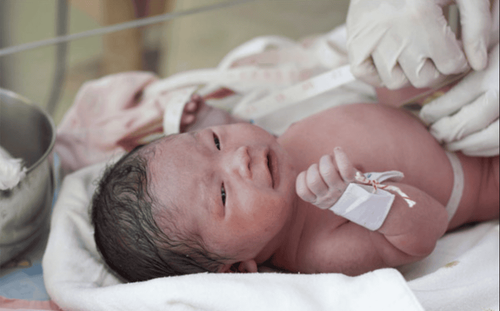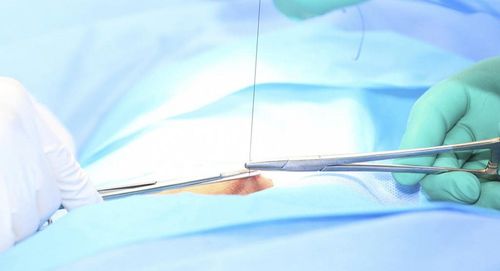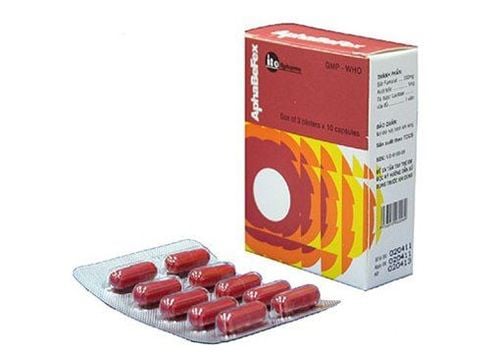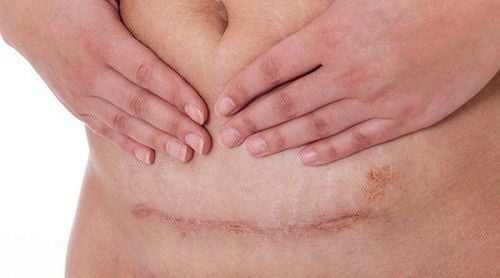This is an automatically translated article.
Injecting 10 units of oxytocin into the mother's thigh, giving skin-to-skin contact, early breastfeeding... are steps in the essential care process for mothers and babies during and immediately after birth. , brings many practical benefits to the health of both mother and infant.1. Essential care techniques for mothers and babies during and immediately after birth
Currently, essential newborn care steps are considered to be extremely advanced methods, which can help babies avoid the risk of heat loss and not being breastfed leading to malnutrition, infections, at the same time help pregnant women recover quickly.
To get the best effect, the World Health Organization (WHO) has recommended applying 6 steps to take care of newborn babies and mothers during and immediately after birth including:
Step 1: Dry and warm the infant by having the baby have skin-to-skin contact with the mother for at least 90 minutes after birth (for the baby to lie on the mother's belly). Step 2: Intramuscular 10 units oxytocin. Step 3: Delayed clamping of the umbilical cord and one-stage clamping and cutting of the umbilical cord. Step 4: Controlled pulling of the umbilical cord. Step 5: Rub the fundus of the uterus every 15 minutes within the first 2 hours right after birth. Step 6: Support for early and exclusive breastfeeding.
2. Benefit from essential neonatal care
Early essential neonatal care delivered with simple, low-cost measures can protect newborns and reduce mortality significantly.
Essential care for mothers and babies during and immediately after birth is started with a mother-infant hug or maintained by skin-to-skin contact, this method not only helps to keep the newborn warm, Transfers blood from the placenta and beneficial bacteria from mother to baby, but also helps bring back milk quickly.

Chăm sóc sơ sinh thiết yếu có thể bảo vệ được trẻ sơ sinh và giảm tỷ lệ tử vong đáng kể
In particular, the child's skin-to-skin contact with the mother right from the first minutes after birth will help increase the early interaction between the mother and the baby, the warmth from the mother will help the baby not to hypothermia, the child will learn find a way to find the mother's breast early and breastfeed better, so that the mother will also have some relief from anxiety and pain during labor.
Some studies have shown that babies who are skin-to-skin with their mothers right after birth are less fussy than babies who are cared for by medical staff and will also be closer to their mothers.
After skin-to-skin contact with the mother, clamping the umbilical cord is performed and cutting the umbilical cord with a sterilized instrument is an important step in the 6 steps of postpartum care.
Some physiological studies in newborns have shown that, in the first minute after birth, the amount of blood transferred from the placenta to the baby reaches about 80ml and after 3 minutes can be up to 100ml. This amount of blood will help provide an amount of iron equivalent to 40-50mg/kg of baby's weight, along with the body's iron can help children prevent iron deficiency anemia in the first year of life, especially in children. preterm birth, reduce the rate of cerebral hemorrhage due to decreased prothrombin.
Derived from clinical and practical studies, clamping the umbilical cord at the right time brings many practical benefits to the newborn baby. In 2012, WHO recommended delayed cord clamping for all vaginal births to prevent postpartum anemia in babies. In case the baby is asphyxiated and requires active resuscitation or the mother needs an obstetric emergency, the umbilical cord must be clamped early.
If the birth is safe, the baby should be breastfed early and exclusively breastfed in the first hours after birth and exclusively for the first 6 months, and supplemented with other suitable foods until the baby is 2 years old. or longer depending on the case. Jobs will help prevent mortality from diarrhea and acute respiratory infections in the first 3 months. Early breastfeeding is one of the essential newborn care steps that not only benefits the baby but also helps stimulate the pituitary gland to increase oxytocin secretion to help the uterus contract better, preventing postpartum hemorrhage.
After the baby's first feeding, other routine care steps such as vitamin K injections, vaccinations, eye drops, weighing and physical examination can be performed, the steps should be performed in the standard order. in order to achieve optimal results.
The steps in essential neonatal care for mothers and babies during, immediately after vaginal birth or by cesarean section are very simple but bring many practical benefits to mothers and babies. Essential maternal and neonatal care during and immediately after birth can be performed in all delivery rooms without complicated preparation or expensive technologies, therefore, wider, especially in remote areas.
Vinmec International General Hospital offers a Package Maternity Care Program for pregnant women right from the first months of pregnancy with a full range of antenatal care visits, periodical 3D and 4D ultrasounds and routine tests to ensure that the mother is healthy and the fetus is developing comprehensively. Pregnant women will no longer be alone when entering labor because having a loved one to help them during childbirth always brings peace of mind and happiness.
Please dial HOTLINE for more information or register for an appointment HERE. Download MyVinmec app to make appointments faster and to manage your bookings easily.













